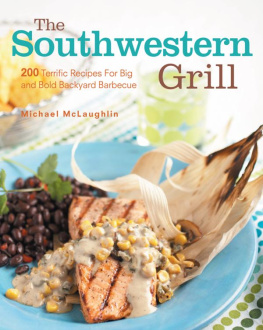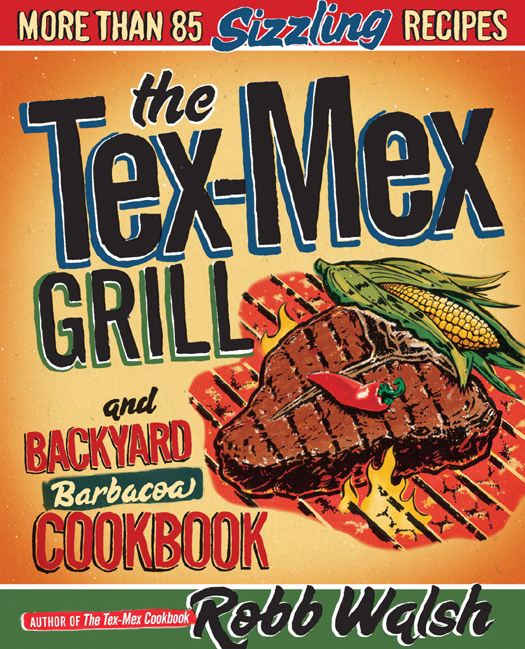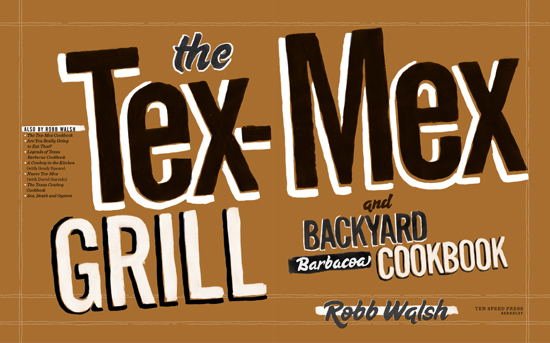Also by Robb Walsh
The Tex-Mex Cookbook
Are You Really Going to Eat That?
Legends of Texas Barbecue Cookbook
A Cowboy in the Kitchen (with Grady Spears)
Nuevo Tex-Mex (with David Garrido)
The Texas Cowboy Cookbook
Sex, Death and Oysters
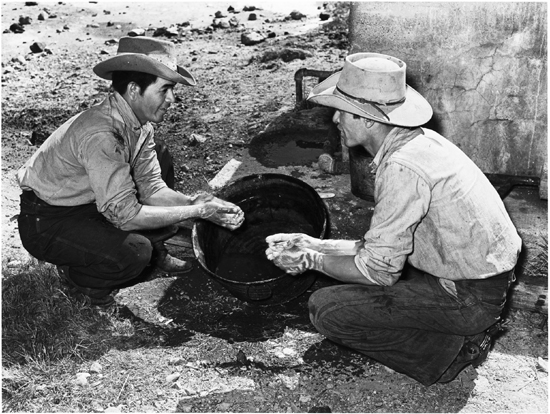
Mexican cowboys washing up after roundup on a cattle ranch near Marfa, 1939
Copyright 2010 by Robb Walsh
All rights reserved.
Published in the United States by Ten Speed Press, an imprint of the Crown Publishing Group, a division of Random House, Inc., New York.
www.tenspeed.com
Ten Speed Press and the Ten Speed Press colophon are trademarks of Random House, Inc.
Portions of this book first appeared in different forms in the Houston Press (or houstonpress.com), a Village Voice Media publication.
Library of Congress Cataloging-in-Publication Data
Walsh, Robb
The Tex-Mex grill & backyard barbacoa cookbook/by Robb Walsh. 1st ed.
p. cm.
1. Barbecue cookeryTexas. 2. Barbecue cookeryMexico, North. I. Title.
TX840.B3W3625 2010
641.578409764dc22 2010002881
eISBN: 978-1-60774-372-9
v3.1

Tailgaters grilling fajitas before a University of Texas Longhorns football game in Austin

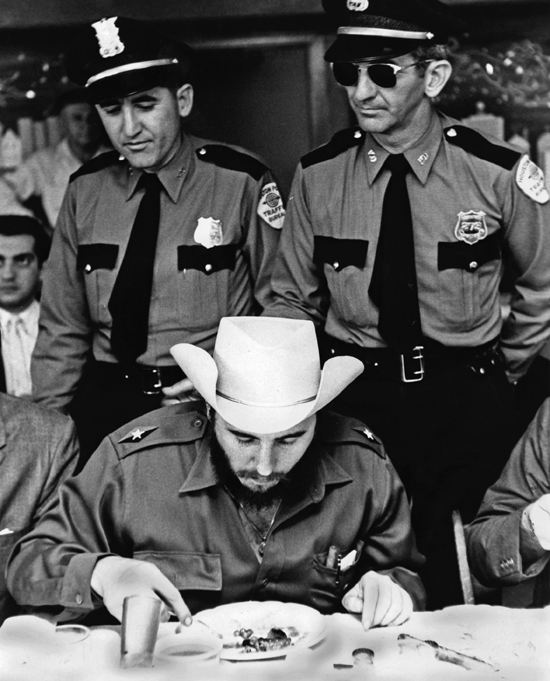
Fidel Castro samples Texas beef at a barbecue restaurant while on a goodwill trip to Houston in 1959
Contents
Acknowledgments
Thanks to the Tex-Mex legends who gave me their time, including Victor Lel, Joe Alonso, Jorge Cortez, Sonny Falcon, Christy Carrasco, David Garrido, Melissa Guerra, Robert Amaya, the late Mama Ninfa, and the late Matt Martinez Jr. Many thanks to chef Guillermo Gonzlez Beristain in Monterrey for his help and hospitality. Thanks to Dr. Jeff Savell and Dr. Davey Griffin of the Meat Science Section of the Department of Animal Science, Texas A&M University, for teaching me where fajitas come from. Thanks to my wife, Kelly Klaasmeyer, for editing, recipe critiques, sage advice, and babysitting. Thanks to my agent, David McCormick, for making it happen. Thanks to Erin Mayes for design work and for going above and beyond. Thanks to Christina Malach at Random House for taking the reins. Thanks to Catherine Matusow and Katharine Shilcutt for moral support.
Thanks to Margaret Downing and my employers for permission to use the photos, text, recipes, and articles first published by the Houston Press (or houstonpress.com), a Village Voice Media publication.
Introduction
From the mesquite fires of the Spanish vaqueros to the taco trucks of modern taqueros, no American regional cuisine has contributed more to the nations grilling style than Tex-Mex. And no one is more fanatical about grilling and barbecueing than the people who inhabit the bicultural borderlands of Texas and northern Mexico.
Grilling has long been a part of the lifestyle of the cattle raisers who settled this region. And while it was mostly replaced by frying and stewing in early Tex-Mex, grilling has experienced a revival. Since the 1970s, fajitas and other grilled meats and seafoods have slowly replaced combo platters as the most popular food in Tex-Mex restaurants and cantinas.
At the same time, the American love affair with the grill has been rekindled. In the twenty-first century, the backyard barbecue has become emblematic of American cookery. It is our connection to the memory of what makes our food American. The word barbecue comes from the Spanish barbacoa; both are words derived from the name that native Americans gave their grills. The barabicu of the indigenous Americans was a grate of green sticks used to suspend meat or fish over smoldering coals.
In the 1600s, European explorers on the island of Hispaniola marveled at this unfamiliar cooking method and were baffled by its inefficiency. They couldnt figure out why the Native American hunters and fishermen were content to lie in their hammocks for hours watching the meat and fish cook slowly over smoldering coals. From the perspective of those of us who cook outdoors for recreation, the simultaneous use of the hammock and the barbecue makes perfect sense.
Whether it burns propane, charcoal, or wood, the modern backyard grill is directly descended from the barabicu of the first Americans. And every twenty-first-century tailgater, cook-off competitor, and backyard barbecuer who grills for the sheer joy of it is an heir to that tradition.
Over the last half century, Tex-Mex grilling has evolved into an eye-popping spectacle of grilled meats and seafoods served on sizzling comals. And the bold-flavor signature of dried chili powder rubs and fresh chile pepper salsas has inspired legions of backyard barbecuers to adopt the borderland grilling style.
I hope this book encourages you to get out your grill. I also hope it puts you in closer touch with the foodways of Texas and northern Mexico and brings some exciting new flavors to your table. Most of all, I hope it makes your next fiesta a lot of fun.
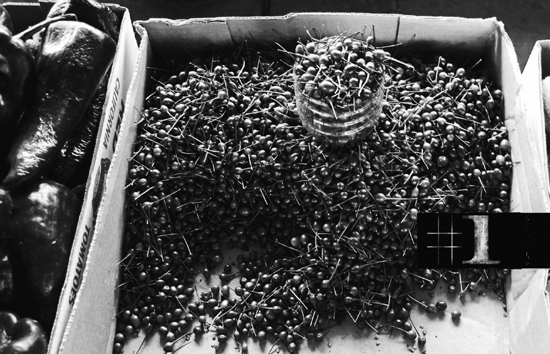
Chile pequns for sale at the Farmers Marketing Association in Houston
Chapter 1

G o down Calle 8 and look for the cabritos cooking on spits in the window. Thats the easy way to find Los Norteos, my favorite restaurant in Matamoros, a Mexican border town across the Rio Grande from Brownsville. The last time I was there, I sat at a table near the grill and made cabrito (baby goat) tacos. I started with a layer of loin meat and some thin kidney slices that I showered with salt. Then I added raw onion and a little lettuce and squeezed a lime wedge over it. I topped this with some pico de gallo, being careful not to load the pliant fresh corn tortilla beyond its rolling point. They were magnificent tacos.
It was May 1, Mexicos Labor Day. There was a big parade in downtown Matamoros, and a lot of people were out celebrating. I had been visiting the busy street vendors stalls all day, eating tacos and taking notes about grilling. Now I was glad to sit down and relax at a real dining table in an air-conditioned restaurant.
Cabrito al pastor, cabrito turned on a metal spit over mesquite coals, is a technique so revered in northern Mexico that it has been adapted to fit elegant restaurants. At Los Norteos and many upscale restaurants in Monterrey, the brick fire pit that holds the pungent mesquite coals and the aromatic goats is separated from the dining room by a wall of thick glass.




